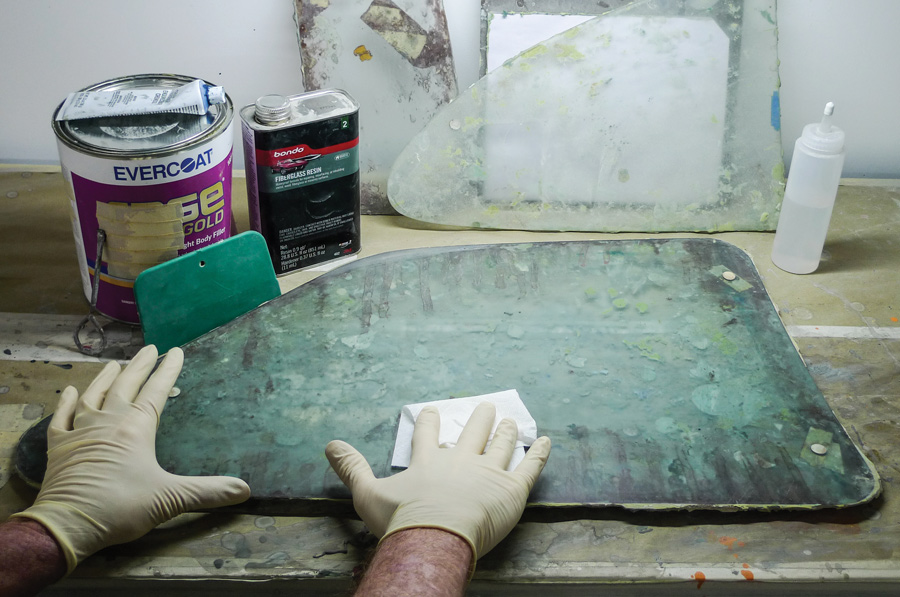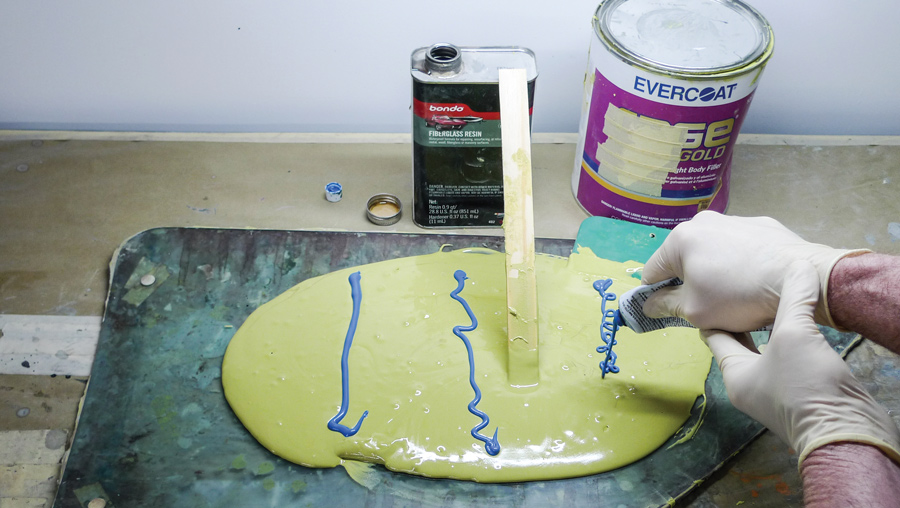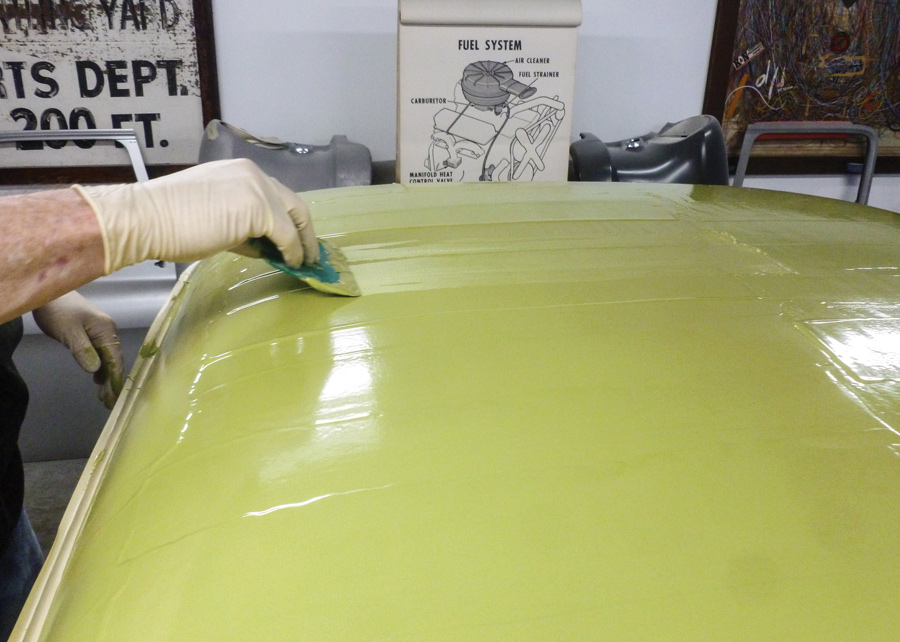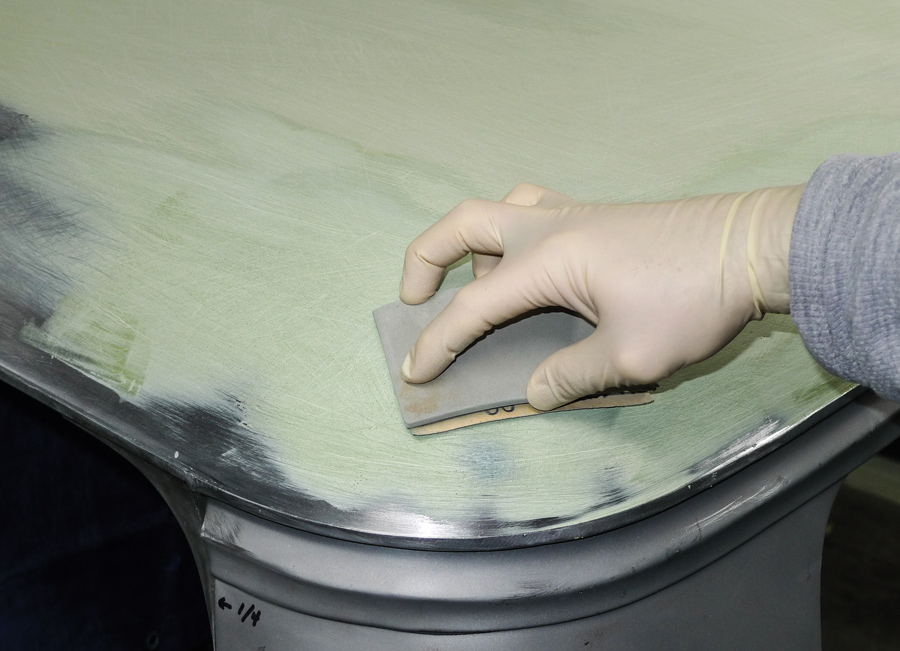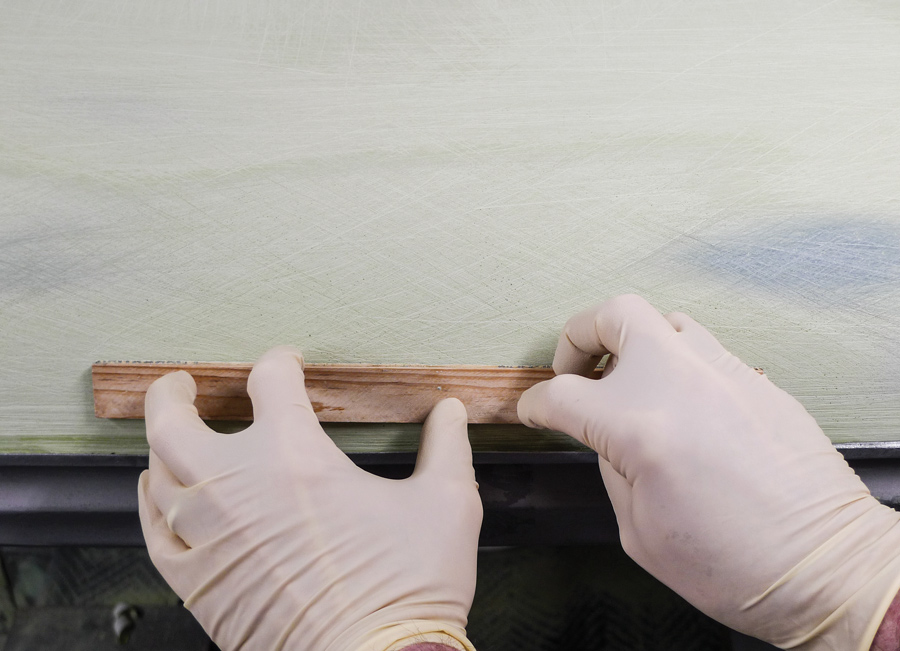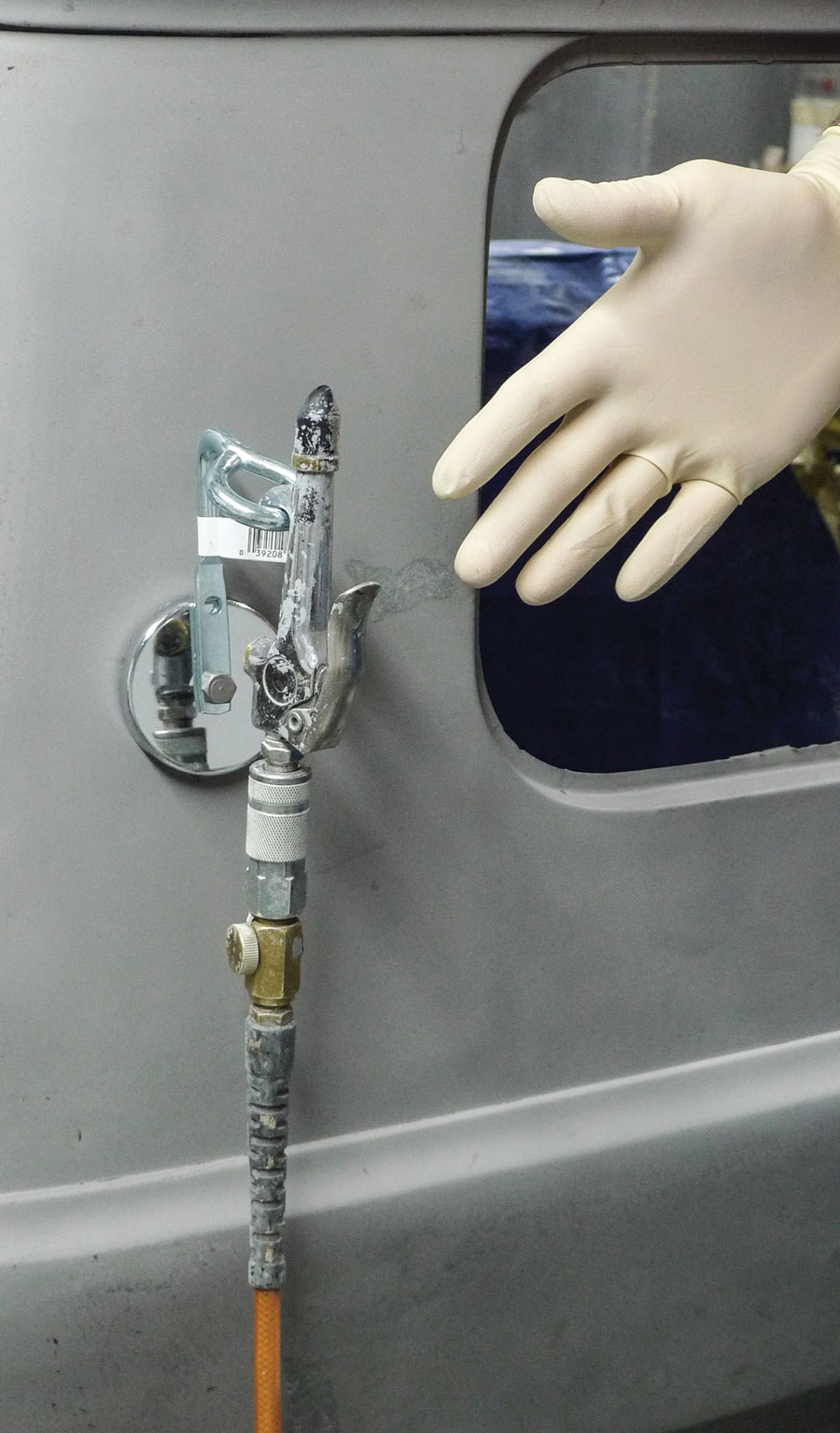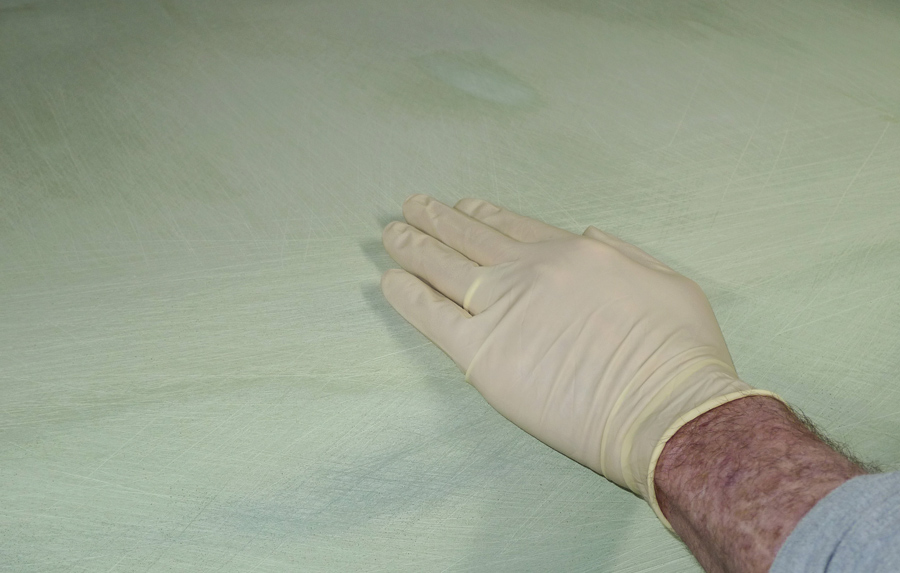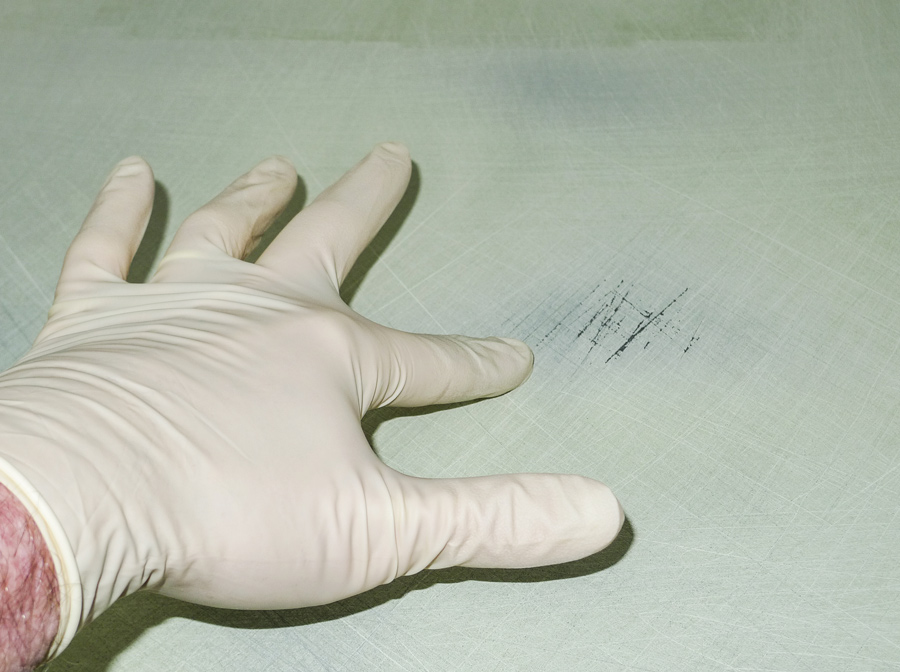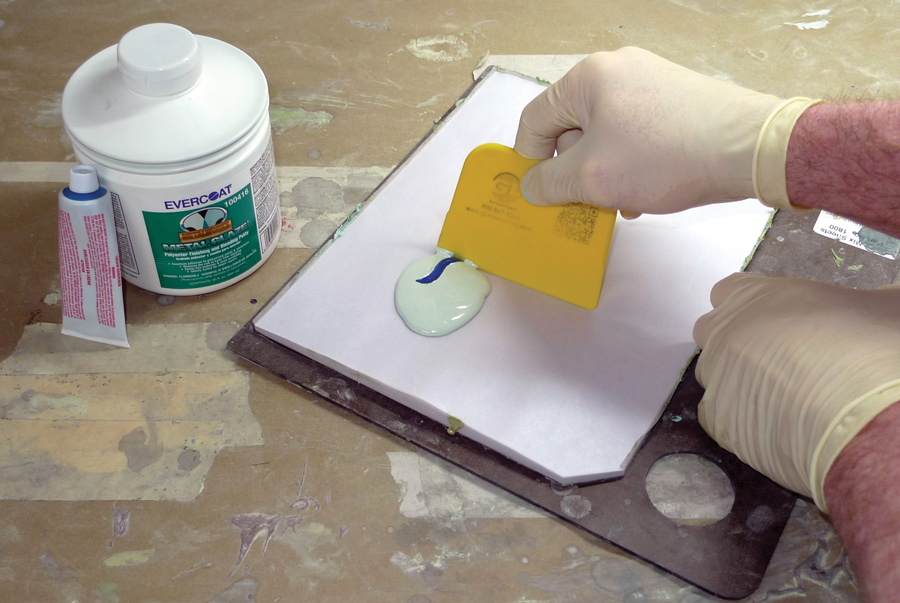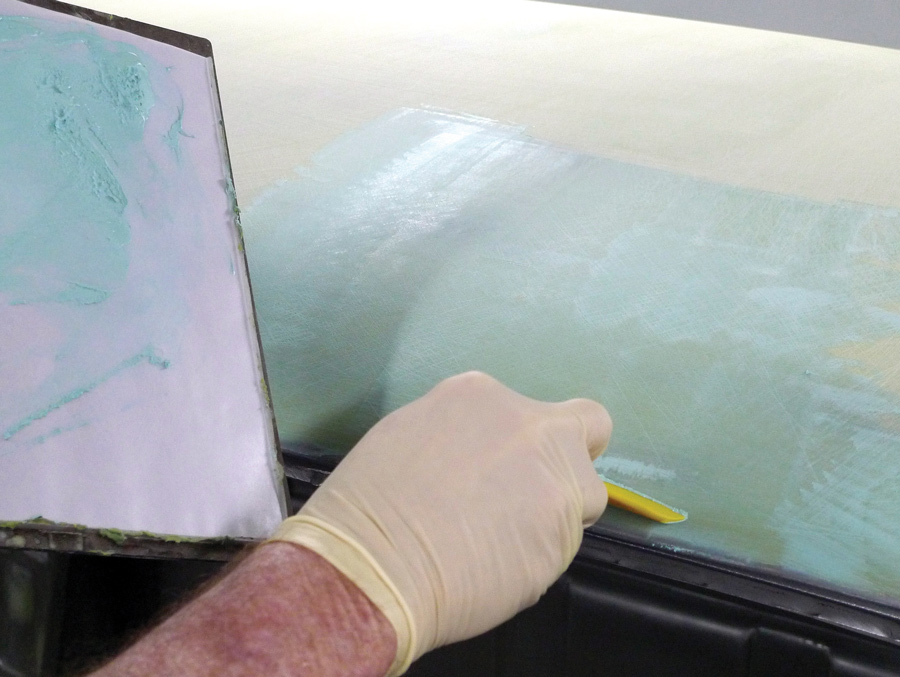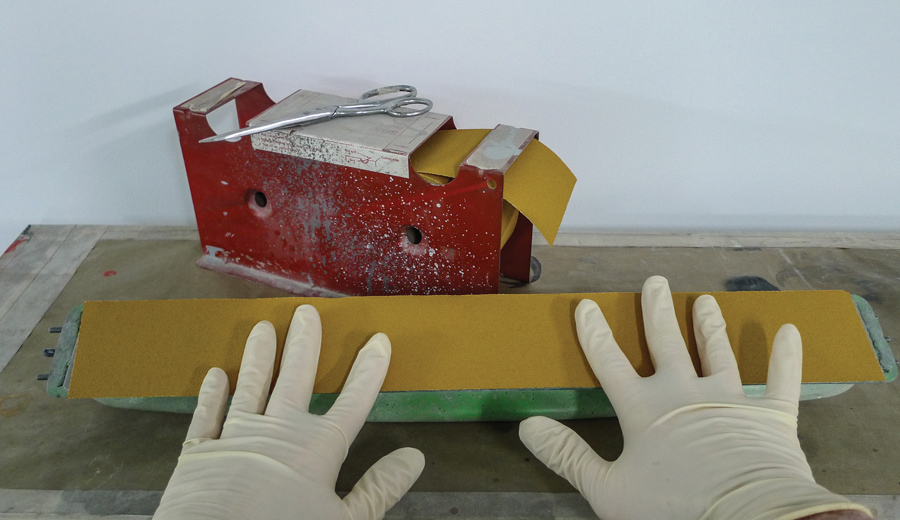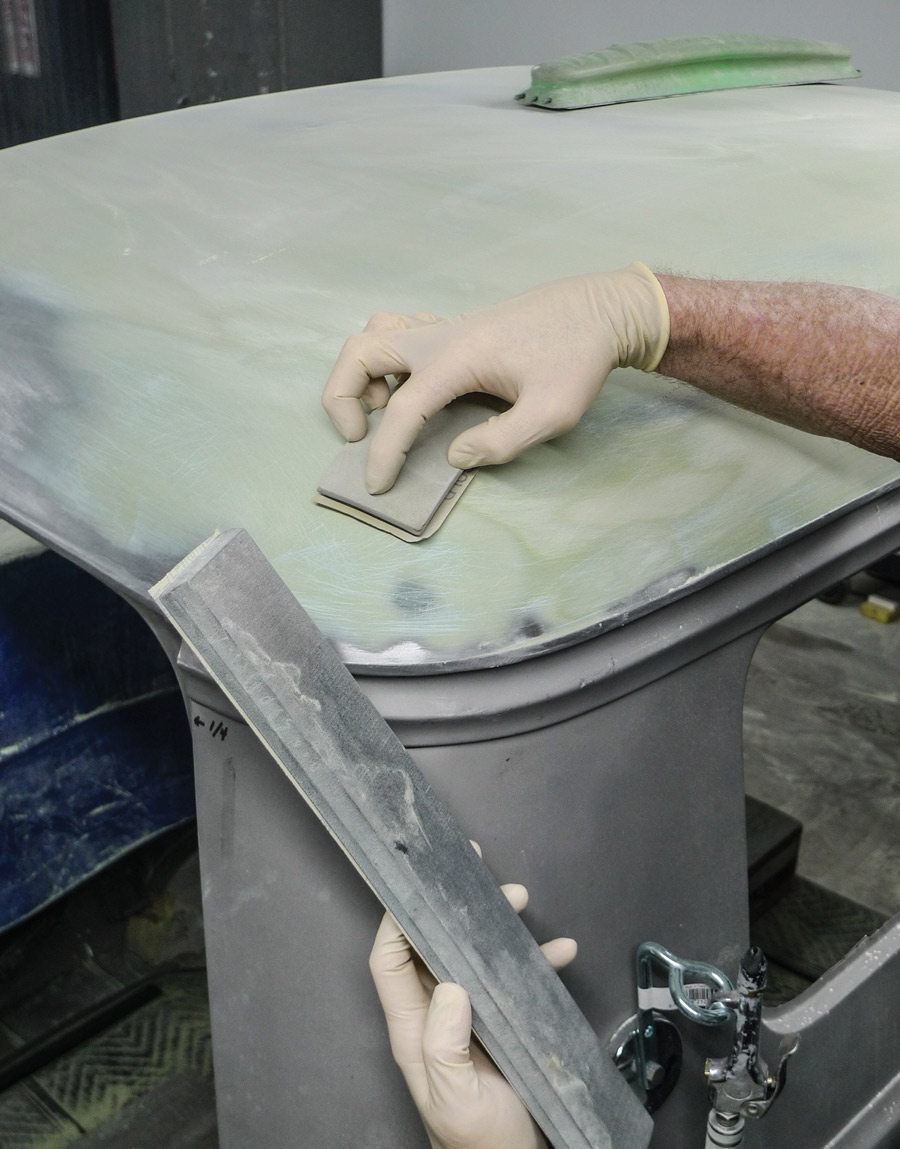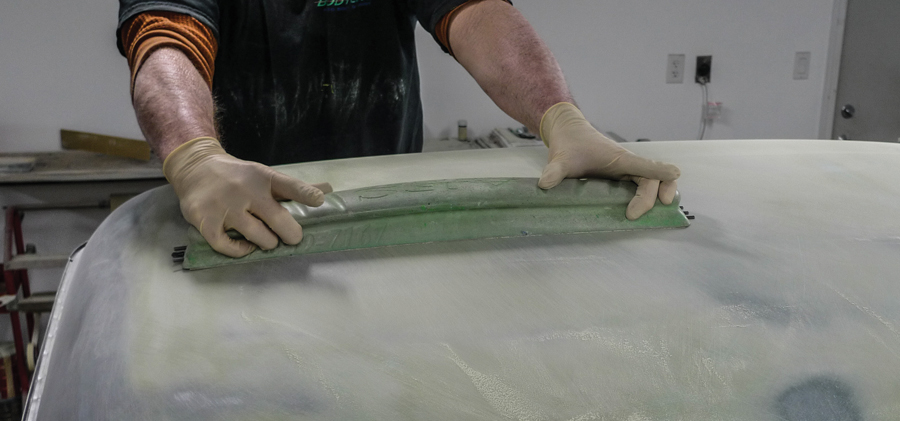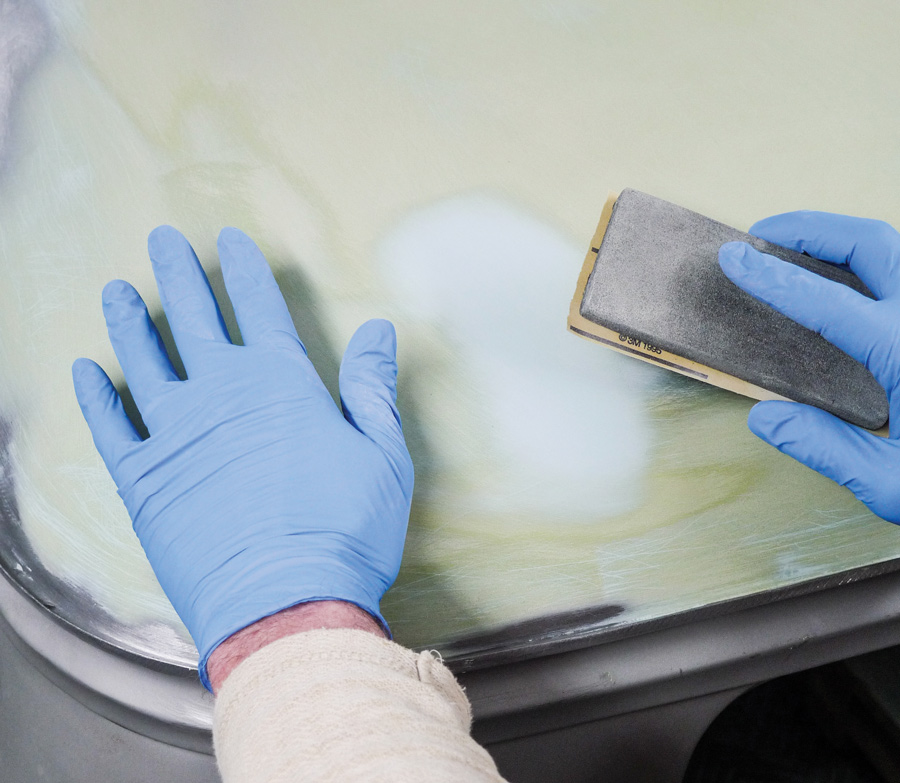
 Tech
Tech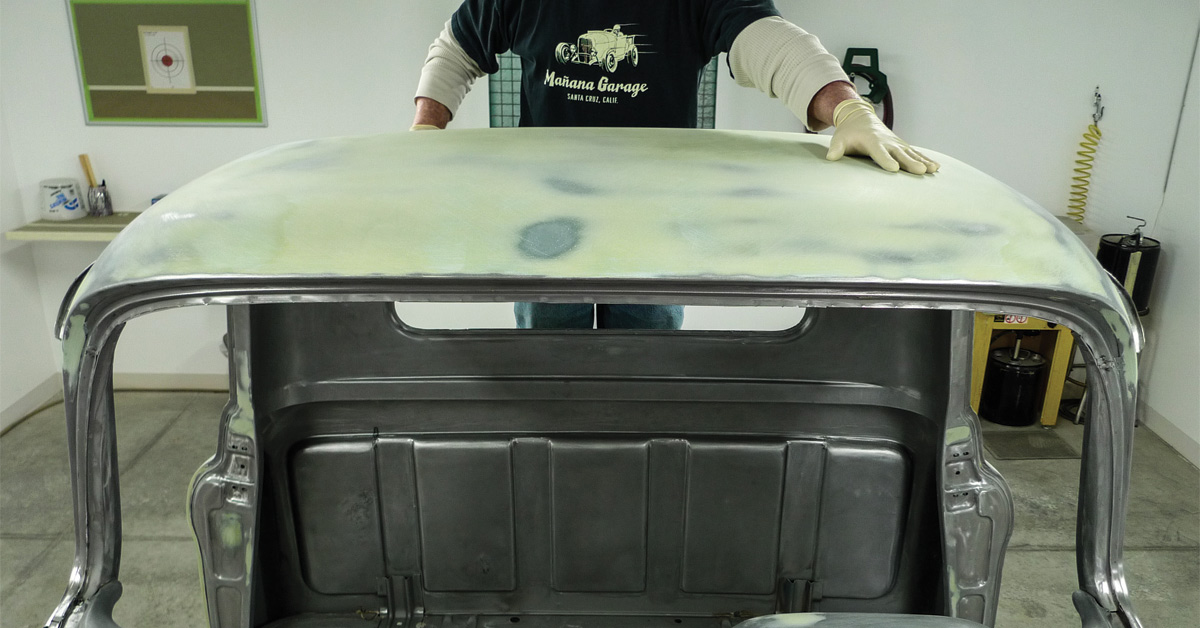

 Photography & Videography by THE AUTHOR
Photography & Videography by THE AUTHORhen it’s used to describe body parts of a truck as shapely as the Task Force Chevrolet, the word “straight” makes little sense. Somehow words that pertain to the autobody trade tend to end up twisted. Take the word “skimcoat” for example. No matter how loosely it’s translated, skimcoat should never mean a thick slab of polyester filler.
Now, as long as we’re discussing weird words and polyester fillers, let’s get this out of the way, right away: Not all polyester fillers are “Bondo!” That’s only a brand name. You can use it if you want to, but for the skimcoat job at hand we’ve already coughed-up the dough for Evercoat Rage Gold, which is among the higher-end fillers available today.
Our local parts store stocks Rage Gold, but it’s currently costing $93.92 per gallon-size can. At the time of this comparison the best deal we’ve found is $63.99 from Summit. As we go here, the majority of tools and materials used are indeed Summit staples.
In our last installment we stiffened a Task Force truck’s oil-canning roof skin. That was accomplished without further heating, beating, shrinking, and/or dinking with the stretched steel itself. That was accomplished by doing our initial fillerwork with a short-strand, fiber-reinforced polyester body filler.
As you may recall from last time, a crack was discovered in the passenger-side A-pillar’s factory-leaded seam. There, ground-away lead was replaced with the reinforced filler as well.
Now where were we, anyway? Oh yeah, our roof skin’s first round of fillerwork is finished, and it’s now ready for a skimcoat. At our shop, like other good ones, skimcoat means a very thin filler application. For fine-feathering purposes, a skimcoat must extend beyond initial fillerwork. Since underlying smears sand at varying rates, the skimcoat is our first opportunity for truly uniform fairing—at least ’til we’ve sanded through it, that is.
For our roof skin’s skimcoat we’ll need a filler that’ll flow. Evercoat offers a number of low-viscosity skimcoat-suitable fillers. We’ve experimented with a few, but so far we always circle back to our versatile old standby.
My own favorite all-around filler is Evercoat Rage Gold. Granted, it ain’t cheap, but then, neither are quality abrasives. If you choose to work with less-expensive fillers, you’ll burn through more abrasives. You’ll also work harder while doing so. Based on my own experience, it’s usually best to go on and spring for the first-choice filler—spendy as it may seem to be.
For skimcoat-reduction of Rage Gold, we’ll add polyester resin to the mix for whatever viscosity feels appropriate. The downside is that extra resin makes the curing mixture extra sticky—at first. For that reason we’ll begin sanding with previously used abrasives. Once the goo layer gives up, we’ll switch to fresh grit and continue on for accurate fairing.
Now, it seems like we may have discussed the “mudhog” before. If not, it’s sort of like an 8-inch version of a dual-action (DA) sander, although its action is somewhat less orbital—if that helps. At any rate, it’ll be the hot-tip tool for the first bit of fairing. For sharpest-possible accuracy, however, we’ll switch to employ a number of different flexible fairing boards, blocks, hand pads, and perhaps a good ol’ fashion wooden paint stick, too.
At the end of our fillerwork marathon, this cab’s exterior will receive an application of epoxy primer, followed by three wet coats of urethane primer-surfacer for finer fairing in the paint-prep stages. We won’t be using a “primer filler” from a ’gun with a fire hose fluid tip. Providin’ you’ll work your polyester filler of choice far enough along, you won’t need the big ’gun either.



